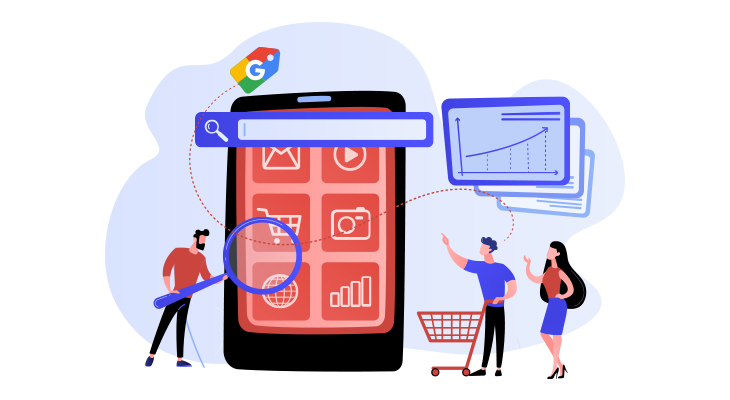
People are not ‘visiting’ online sites anymore, they are practically living there.
Learn the essentials of listing your products on Google Shopping with our step-by-step guide to increase visibility and drive sales effectively.
It is imperative for small businesses to majorly have their product found. Google Ads mostly make up for around 76% of total ad spend in retail. It results in 85% clicks on these campaigns.

With the expenditure of every $1 on Listing ads, advertisers can receive $8 ROI from Google searches and Ads. ROI means return on investment, which is a performance measure used for evaluating the profitability of your investment.
Technically, it is a simple ratio dividing the net profit from an investment by its cost.
So if you are a business wanting to make your product listings stand out from outranking competitors are at the right place! But first, let us have an overview of the underlying related concepts:
Product Listing Pages and Product Listing Optimization
PLPs or Product Listing pages are sections in the website listing products as per a category, based on applied filters in a particular search query.
This gives rise to individualized pages of product detail for more information to be available to users and consequently adding products to the cart. It can ensue after a specific product is optimized to be valuable to the current users or more attractive to new ones.
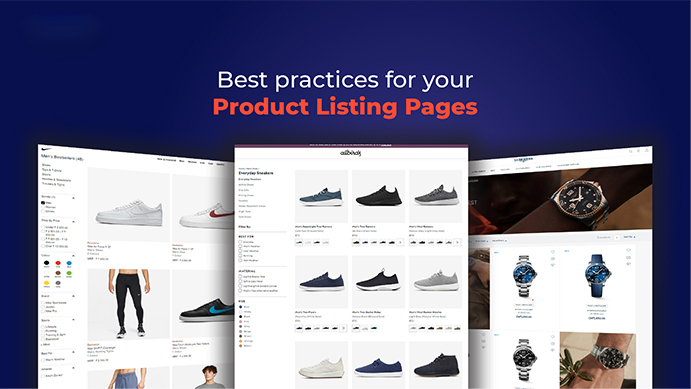
PLO or Product Listing Optimization is the technique in which all elements in a product listing for a particular channel of sales, for instance, Google Shopping or Amazon, are optimized for ranking higher and selling more.
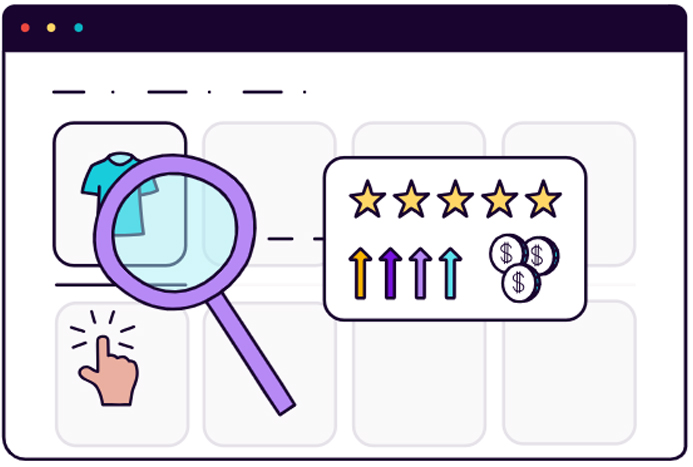
Google Shopping Campaigns
It is a Google-based service that allows users to view, search and compare various products from online retailers. It allows for a platform for different businesses to effectively list products, and for consumers to purchase them across the search engine in Google.
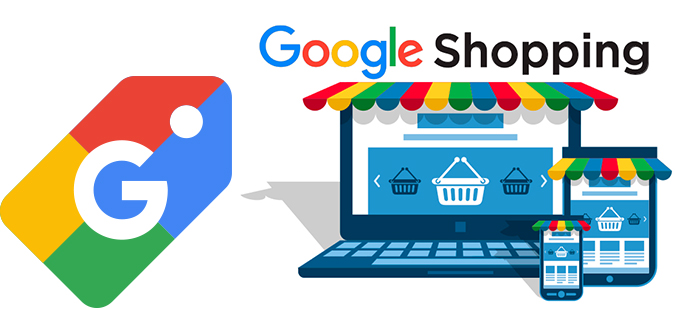
Google shopping Campaigns help in the promotion of products by providing users with detailed information regarding what is being sold before they click on the ad. The product performance could be tracked using reporting tools that are retail-centered, making it easier to put out the campaigns and expenditures in the limelight and perspective.
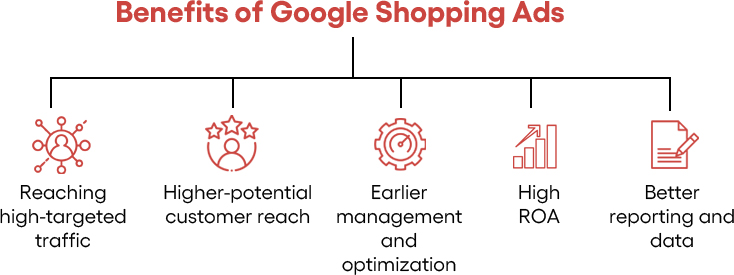
Types of Google Campaigns
| Factors | Growth Marketing |
| Web Traffic | Search, Video, Performance Max, Discovery, Shopping |
| Leads | Search, Video, Discovery, Shopping, Performance Max |
| Brand and Product Consideration | Video |
| Reach and Brand Awareness | Display, Video |
| Promotion and Local Store Visits | Local, Performance |
| Sales | Search, Discovery, Shopping, Performance Max, Video |
So to understand, Google Shopping comprises Two things: Google Merchant Center & Google Ads.
While the Google Merchant Center can provide product data through the product feed, Google Ads utilize that information to produce, fabricate and manage various Shopping campaigns for growth marketing. It displays the relevant product ads to the users.
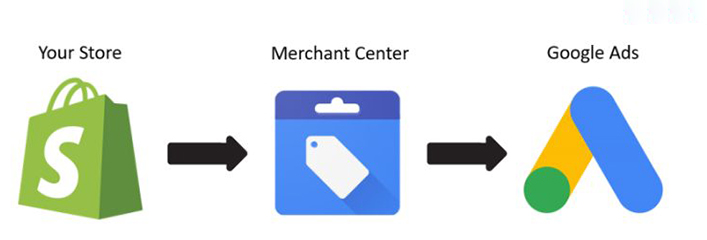 Merchant Center – > Google Ads” width=”707″ height=”240″>
Merchant Center – > Google Ads” width=”707″ height=”240″>
Getting Started with Google Shopping
One can leverage Google’s reach to get their products out using a Google Merchant account. Sellers can join in using a simple application. After it gets accepted, starting is no big ado:
Here are the steps as follows:
- Go to Google Merchant Center to set your account up and fill in the company details.
- Come to the main Merchant Center Dashboard.
- Check the Shopping Options status under the “Organic” tab.
- To review if the products are appearing across Google, the “Organic” option has to be selected from the left side menu of the merchant center. This makes products visible organically across Google.
Optimizing the Google Shopping Feed
How to Optimize Google Shopping Lists:-

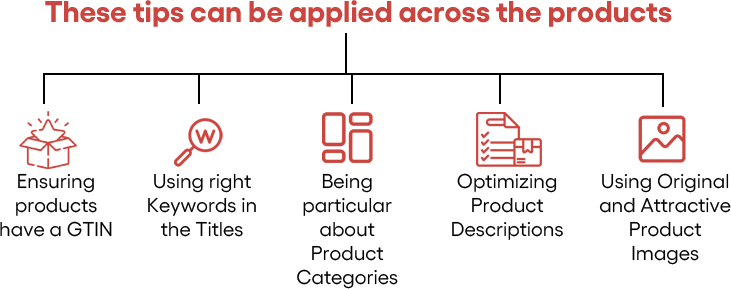
Include a GTIN
If you are a goods manufacturer or a reseller, the GTIN attribute can be used to track products across Google’s surfaces. Known as ‘Global Trade Item Numbers’ makes it easier for their ad or unpaid listing to be found by customers. It also is used to highlight the MAP pricing through the Manufacturer Center.
- In case you lack the GTIN of a product, try researching as well as contacting the manufacturer for the same.
- No GTIN is needed for one-off goods, like used items, bundled products, and antiques.
- The GTIN needs to be included when available for the valuable information provided.
Google Shopping Listing
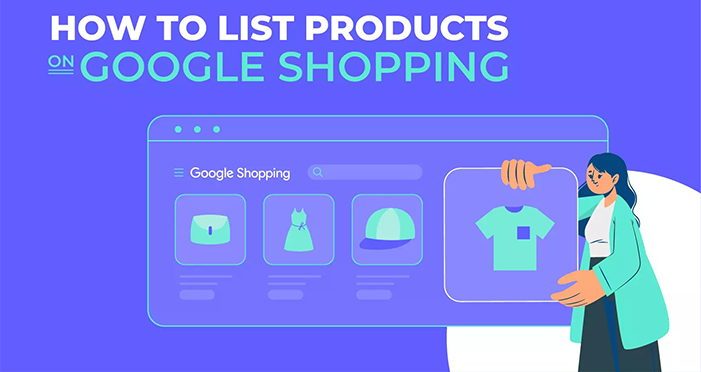
Product Titles
Use relevant keywords reflecting user search queries in the title. This would need Keyword Research to see what users search for when they look for similar products, same as yours.
- Optimizing the Product Title is important as Google Shopping is a broad match. The algorithm utilizes a title to identify what is being searched for.
- Craft concise titles with relevant details. Align the titles with how the customers discuss a product. The relevance and specificity need to be kept in mind to enhance the likelihood of conversions.
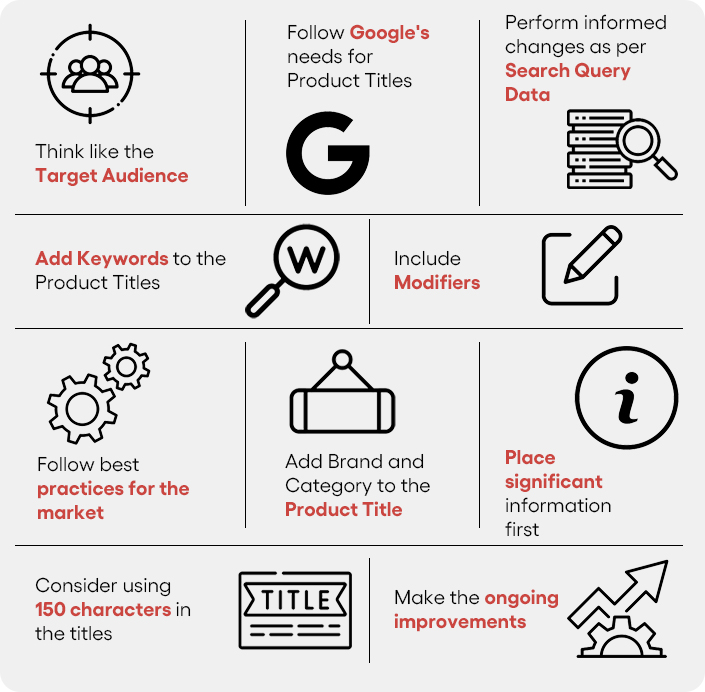
Product Category
It gives an idea of how products remain categorized and placed inside Google Shopping.
Out of 6000 default categories of Google Products, it is recommended to get granular. For instance, if you are wishing to sell running shoes and the product category has not been optimized, the products might end up under “casual shoes”. Similar examples include outdoor plants and indoor plants, or desk lamps and bedside lamps.
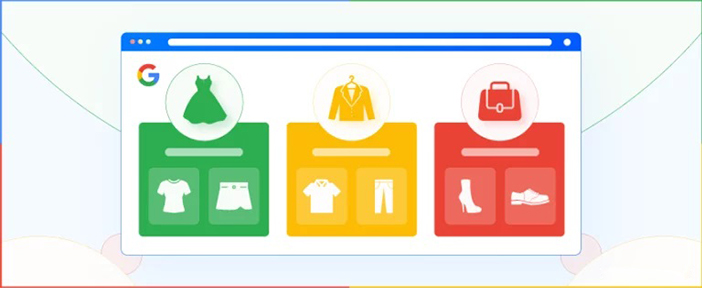
Product Description
Make them pragmatic and detailed to receive organic points of search. It also has to be sweet and short, highlighting unique characteristics.

Tips to optimize product description
- Product Title should be at the end of the description
- High-relevance keywords are to be included in the description.
- Remove unnecessary HTML code.

Product Images
The quality of the e-commerce images is important in purchase decisions. The better the pictures, the higher the chances of sales.

- High-resolution images should be considered as people often zoom in to check product details and it should not get grainy.
- Alt text of images need to be descriptive of the product, preferably with long-tail keywords.
You Need to Monitor the Product Lists
Compare the given product listing to other relevant or similar listings that perform well. This would determine the rates of how to improve one’s own.
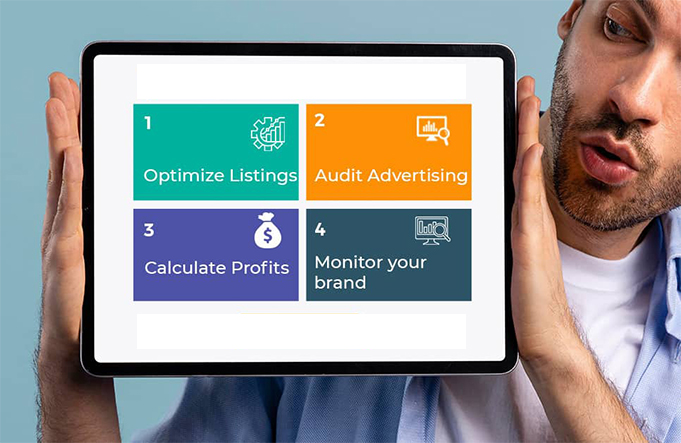
This would ensure updating the data on the feed regularly
The feed needs to be updated for product prices, changes in inventory levels, product availability and so on.
To efficiently update a feed, clients are asked for a dynamic file, meaning that they would pull in a new file of client products each day. The products are optimized through a custom tool after which the data is uploaded to Google Merchant Center.
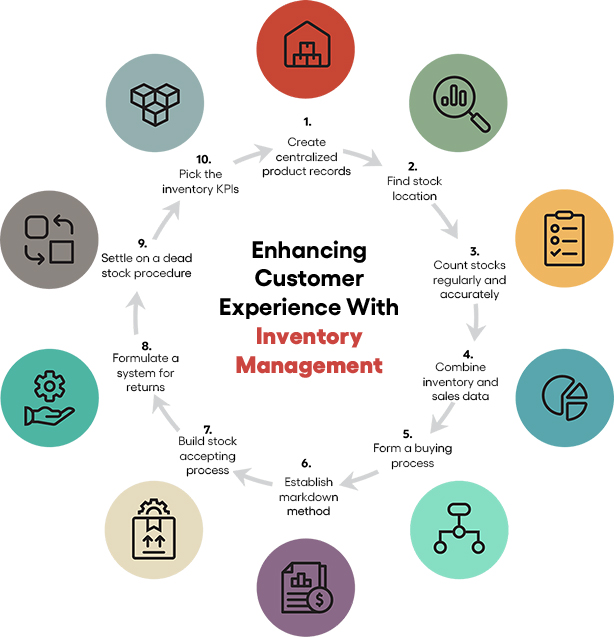
Product Data Should Be Matched to Landing Pages
The messaging on shopping ads and their corresponding landing pages should be the same, or else a lower conversion rate and poor ad scores would ensue.
The product to be shown on the landing page has to be identical to the product in the product data, irrespective of the user’s device, location, browser, targeting choices of the ad, cookies and so on.
Feed-Level & Item-Level Warning
This is in tune with understanding the Merchant Center Alerts.
During the time of a feed-check, the merchant center would be studying the data to ensure file readability and correct delimiting.
Item-level warnings that occur at the level of products talk about specific issues like missing attributes, give warnings and recommendations.
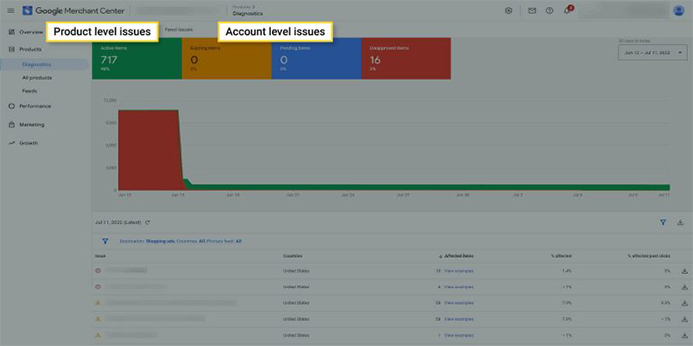
At the unity of both levels, the alerts would ably guide one to address issues effectively in the data feed.
Analysis of Ad Performance Data
Google Shopping data needs to be cross-referenced with other ad sources and a search volume. One needs to consider looking at conversions, negative keywords & search volume.
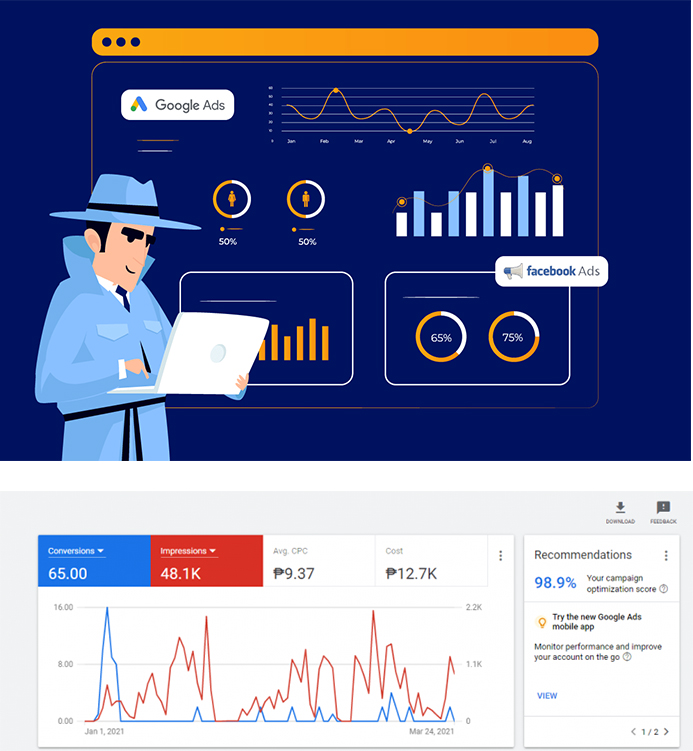
Analyzing the campaigns and feed from the level would help one steadily increase performance over a longer period.
One remarkable strategy:
It is easier to target visitors while delivering ads to them as per the websites surfed by them. Information is taken from the Merchant Center Feed while building customized ads.
In RLSA or “remarketing lists for search ads”, instead of building campaigns, audiences are required to utilize Ads or Google Analytics. If previous customers visit the store, they have ads displayed as per the products viewed back then.
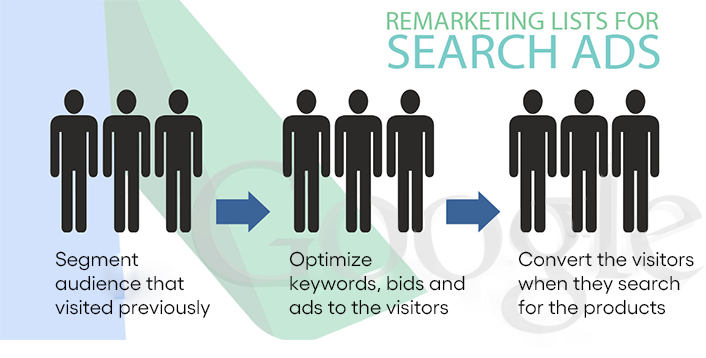
Conclusion
Optimization of the Google Shopping Feed would be a powerful method for improving performance, lowering the price per click, as well as generating sales effectively for the e-commerce business. It’s on them to try out different ways of optimizing these campaigns to figure out a formula that would be best suited and would work perfectly.
